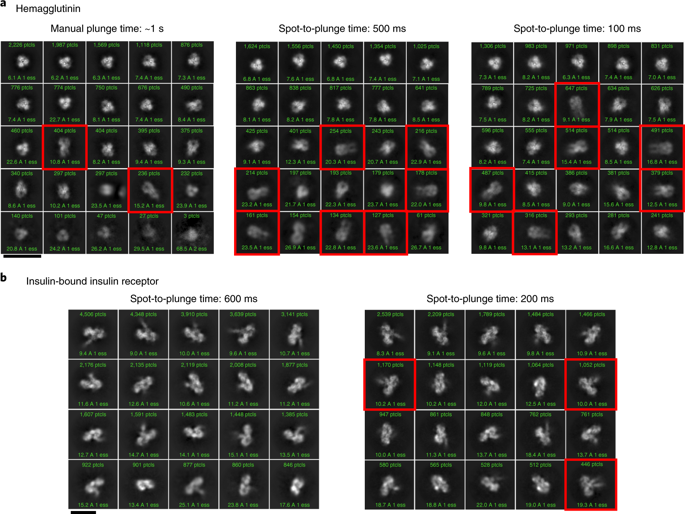Nature Methods ( IF 48.0 ) Pub Date : 2018-09-24 , DOI: 10.1038/s41592-018-0139-3 Alex J Noble 1 , Hui Wei 1 , Venkata P Dandey 1 , Zhening Zhang 1 , Yong Zi Tan 1, 2 , Clinton S Potter 1, 2 , Bridget Carragher 1, 2

|
Most protein particles prepared in vitreous ice for single-particle cryo-electron microscopy (cryo-EM) are adsorbed to air–water or substrate–water interfaces, which can cause the particles to adopt preferred orientations. By using a rapid plunge-freezing robot and nanowire grids, we were able to reduce some of the deleterious effects of the air–water interface by decreasing the dwell time of particles in thin liquid films. We demonstrated this by using single-particle cryo-EM and cryo-electron tomography (cryo-ET) to examine hemagglutinin, insulin receptor complex, and apoferritin.
中文翻译:

减少冷冻电镜中颗粒吸附对空气-水界面的影响
大多数在玻璃冰中制备的用于单颗粒冷冻电子显微镜 (cryo-EM) 的蛋白质颗粒被吸附到空气-水或基质-水界面,这可以导致颗粒采用优选方向。通过使用快速冷冻机器人和纳米线网格,我们能够通过减少颗粒在薄液膜中的停留时间来减少空气-水界面的一些有害影响。我们通过使用单颗粒冷冻电镜和冷冻电子断层扫描 (cryo-ET) 检查血凝素、胰岛素受体复合物和脱铁铁蛋白来证明这一点。



























 京公网安备 11010802027423号
京公网安备 11010802027423号